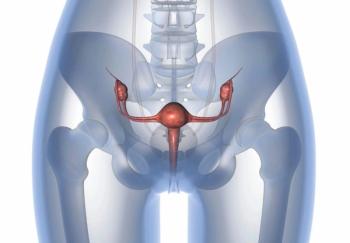
Oncology NEWS International
- Oncology NEWS International Vol 9 No 7
- Volume 9
- Issue 7
Weekly Paclitaxel as Effective as Every-Third-Week Dosing in Ovarian Cancer, With Fewer Toxicities
LINKOPING, Sweden-The optimal schedule for dosing paclitaxel (Taxol) has not been determined. However, a study that compared two dosing schedules with the same dose intensity in ovarian cancer patients found equivalent efficacy, with somewhat varying toxicities.
LINKOPING, SwedenThe optimal schedule for dosing paclitaxel (Taxol) has not been determined. However, a study that compared two dosing schedules with the same dose intensity in ovarian cancer patients found equivalent efficacy, with somewhat varying toxicities.
Per Rosenberg, MD, head of the Department of Gynecologic Oncology, University Hospital, Linkoping, Sweden, presented the results at the 36th annual meeting of the American Society of Clinical Oncology.
All subjects had advanced ovarian cancer and had been treated with no more than one regimen containing platinum. One group, with 104 evaluable subjects, started with 67 mg/m² of paclitaxel every week. The other group, with 101 evaluable subjects, started with 200 mg/m² every 3 weeks. If no toxicity occurred, the dose was increased. As a result, those in the weekly arm ended up with a higher average dose intensity, but a lower total dose.
In addition, some in each group received oral steroids 6 and 12 hours before paclitaxel, while the remaining subjects received parenteral steroids 30 minutes before paclitaxel. Median observation time was 42 months.
There was no significant difference in the response rate, Dr. Rosenberg said. In the weekly paclitaxel group, 35.2% had a complete or partial response, compared with 36.9% of the every-third-week group. However, the researchers had to close the study with many fewer patients than originally planned, reducing the statistical power. So there might well be a difference in magnitude of up to 50% without us being able to detect that, he said.
Also nonsignificant were the differences between survival (13.6 months in the weekly group vs 14.7 months in the every-third-week group) and time to progression (6.1 months vs 8.1 months, respectively).
In contrast, toxicities did vary between the groups. Compared with the weekly schedule, the every-third-week treatment caused more grade 3/4 neutropenia (45% vs 18% in the weekly group), grade 3 neuropathy (29% vs 11%), alopecia (79% vs 46%), and joint and muscle pain (8% vs 5%).
The only toxicity seen more often in the weekly treatment group was thickening and loosening of nails, which occurred in 9% of patients on weekly paclitaxel and none of the patients getting it every 3 weeks.
There was no difference in hypersensitivity reactions between people getting oral steroids and those getting parenteral steroids.
We could not detect any significant difference in overall response rate, survival, or time to progression, although this study is underpowered, Dr. Rosenberg concluded.
A Second Study of Weekly Paclitaxel for Ovarian Cancer
Another study presented at the ASCO meeting also shows that weekly paclitaxel (Taxol) is effective and well tolerated in treating advanced, platinum-resistant ovarian cancer.
Maurie Markman, MD, chair of the Taussig Cancer Center at the Cleveland Clinic Foundation, said that data from all patients who had at least one evaluation for toxicity and response in the ongoing trial showed a 32% response rate both in 27 patients with measurable disease and in patients with evaluable disease based on CA-125 levels.
The study was based on observations in experimental systems that paclitaxel cytotoxicity is highly cycle-specific. Increased bone-marrow toxicity associated with 24-hour vs 3-hour paclitaxel provides clinical support for the importance of cell-cycle specificity, Dr. Markman said.
The multicenter phase II trial was designed to evaluate the toxicity and activity of weekly paclitaxel (80 mg/m² as a 1-hour infusion) in patients with ovarian cancer refractory both to platinum and to paclitaxel given on a ³ 3-weekly schedule.
The study enrolled 41 patients with ovarian cancer, primary peritoneal carcinoma, or fallopian tube cancer. All had progression or stable disease as best response to initial platinum/paclitaxel therapy or recurrence within 3 months after treatment.
In 25 patients with measurable disease, there were no complete responses but 8 partial responses (32%). In the 16 patients with evaluable disease, 5 (32%) responded with a greater than 75% decrease in CA-125 levels.
Weekly paclitaxel at this dose can be safely administered to previously treated patients with ovarian cancer, with considerable activity being observed in individuals with platinum and paclitaxel (every-third-week schedule) resistant/refractory disease, Dr. Markman concluded. It would be appropriate to examine a weekly paclitaxel schedule in a randomized trial as a component of initial chemotherapy of advanced ovarian cancer.
Articles in this issue
over 25 years ago
Couric Urges Doctors to Talk to Patients About Colon Cancerover 25 years ago
Automated Imaging Notification System Close to Fail-Safeover 25 years ago
Higher Dairy Consumption Linked to Prostate Cancer Riskover 25 years ago
First-Year Funding of Early Detection Research Network Completeover 25 years ago
Gritty Antitobacco Ads and More From Legacy Foundationover 25 years ago
Tositumomab Effective for Low-Grade Follicular Lymphomaover 25 years ago
New Awards Spotlight Courage of Cancer Survivorsover 25 years ago
Hospital Volume Shown to Predict Breast Cancer Outcomeover 25 years ago
New Drug Information Websiteover 25 years ago
NCCN Presents Updated Colorectal Cancer GuidelinesNewsletter
Stay up to date on recent advances in the multidisciplinary approach to cancer.



















































































